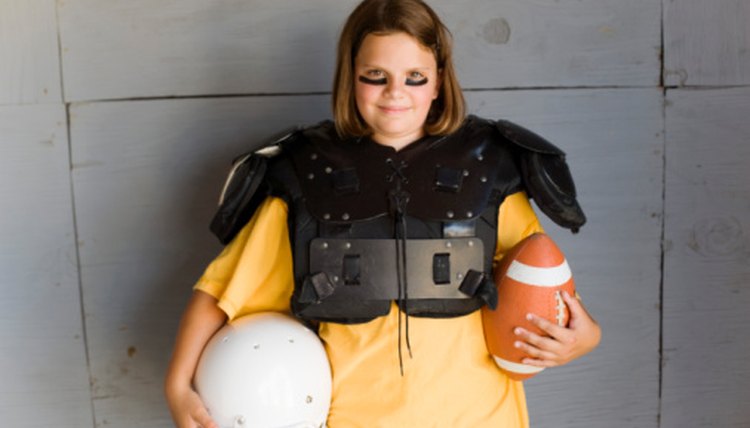Timeline: History of Football Pads

Football pads were first used in 1877, not long after football became an established pastime on U.S. college campuses. The first football pads were much smaller and thinner than those used in today's games. Over time, football pads evolved to cover more of the body, stand up to rough use and to be lighter and sturdier than the original pads.
1877
In 1877, Princeton football player L.P. Smock designed the first football pads. Smock's pads were thin quilted layers sewn to the shoulders, thighs and knees of the laced-up jersey and knee pants he designed as the first football uniform for Princeton's players. The pads were not very heavy, and they also did not provide much protection.
1890s
The 1890s saw significant changes in football rules and the creation of better football pads. In 1894, the "flying wedge" formation was outlawed after it killed 20 collegiate players and injured 100 more in a single season. Meanwhile, sports equipment manufacturers, including Spalding and Victor, began marketing leather football pads. The pads were thicker than Smock's original pads, and their leather construction made them more sturdy. Also, unlike Smock's pads, the leather pads were designed to be sewn or strapped to the outside of the football uniform.
1915
In 1915, sports equipment manufacturers developed and sold the first football helmets. These helmets were made of soft leather and were designed primarily to cover and protect the ears. Although early football helmets were called "head harnesses" by their manufacturers, their distinctive earflaps soon earned them the nickname "dog-ear helmets." In the 1930s, the first hard leather helmets appeared, followed by rigid plastic helmets in the 1950s.
1930s
In the 1930s, football shoulder pads first took on the form we recognize today: a separate set of pads that cover the entire shoulder and upper chest area. The pads were first developed by the Spalding company and were made primarily of leather. Like some shoulder pads used today, they had laces in the front so players could adjust the fit. Although they offered greater protection than the quilted or leather pads, they were also significantly heavier.
1980s
During the 1980s, football padding and helmets continued to improve. Helmets developed full face masks that prevented injuries like broken noses. Manufacturers began to make shoulder pads using plastic and other synthetic materials that made the padding lighter and stronger. In addition, shoulder pads began to use a cantilevered design that dissipated the impact of a hit. Hip, thigh and knee pads also became common equipment. Today, college and professional football players are required to wear a helmet and pads when they play.
References
Resources
Writer Bio
A.L. Kennedy is a professional grant writer and nonprofit consultant. She has been writing and editing for various nonfiction publications since 2004. Her work includes various articles on nonprofit law, human resources, health and fitness for both print and online publications. She has a Bachelor of Arts from the University of South Alabama.
